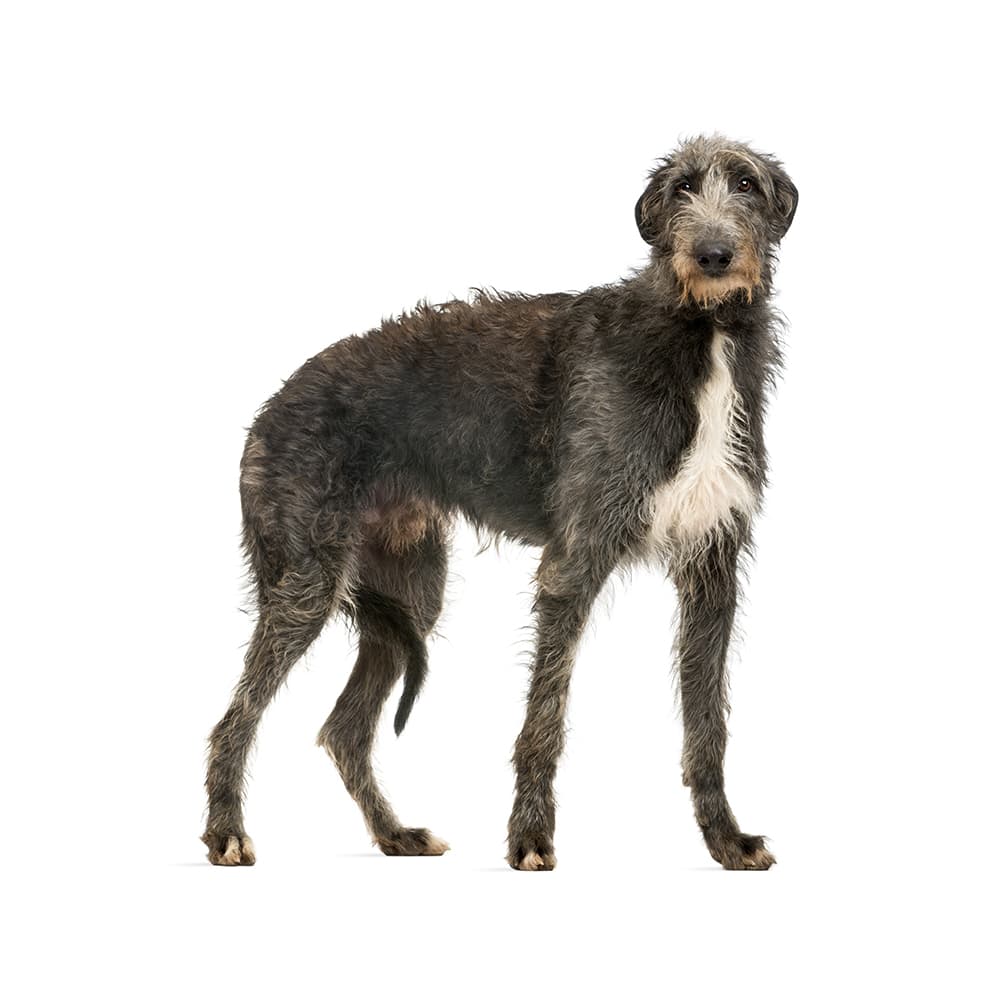Discover your dog's connection to this breed and 200+ others


Discover your dog's connection to this breed and 200+ others



The Scottish Deerhound, also known as the Royal Dog of Scotland, is a breed of large hound that has been used for hunting red deer for centuries. Its history can be traced back to pre-Roman times, but it was in the 16th and 17th centuries that the breed became truly popular, especially amongst the Scottish nobility. The Deerhound almost went extinct in the late 1700s and early 1800s due to changes in deer hunting methods, but was revived by dedicated breed enthusiasts in the 19th century. Its historical association with nobility means that it has often been featured in literature and art.
Scottish Deerhounds can suffer from hypothyroidism, gastric dilatation-volvulus (bloating), osteosarcoma, cystinuria, cardiomyopathy, and neck pain. They may also be affected by Factor VII deficiency, delayed bleeding, hyperthermia, and slow drug metabolism that are important to know about before any planned surgery.
Scottish Deerhounds are known for their dignified, gentle, and polite demeanor. They are friendly, affectionate dogs that enjoy the company of their families and other dogs, but can be somewhat reserved with strangers. They require regular exercise to keep them healthy and happy.
A canine genetic lineage is a group of individuals or entire breeds that descended from common ancestors predating modern breed formation. Often these lineages are associated with a ‘type’ of dog with a unique historical working role and associated behaviors (e.g., herding, scent hunting, etc.).
Sighthound breeds date back thousands of years, they were bred for speed and agility. The physical characteristics of sighthounds include long lean bodies with a deep chest and long legs and allow them to run fast over short distances. Sighthounds are excellent hunters for fast-moving prey while using their sight rather than scent to find and follow their prey. They tend to be independent, but also gentle and affectionate with their families.
Example breeds with ancestry from this lineage include Greyhound, Irish Wolfhound, and Whippet.
The breed's rough, wiry coat helped it withstand the harsh Scottish climate while hunting deer. They usually hunted alone or in pairs.
The Scottish Deerhound played an important role in Sir Walter Scott's novel "The Talisman", where the character Sir Kenneth has a faithful deerhound named Roswal.
Queen Victoria owned a Scottish Deerhound named Hector, which boosted the breed's popularity during her reign.
https://www.akc.org/dog-breeds/scottish-deerhound/
https://www.fci.be/en/nomenclature/DEERHOUND-164.html
https://www.ukcdogs.com/scottish-deerhound
https://www.petmd.com/dog/breeds/c_dg_scottish_deerhound
Recommended by top vets with decades of experience
21 breeds
64 genetic health markers
50 genetic trait markers
